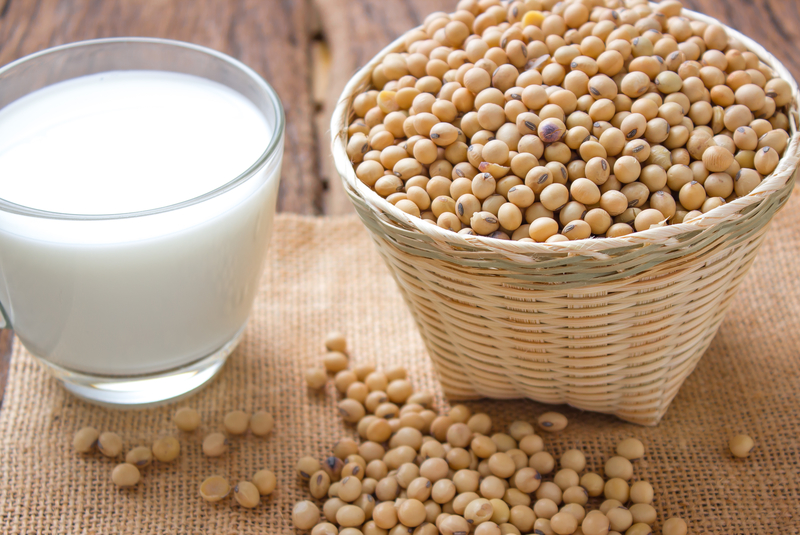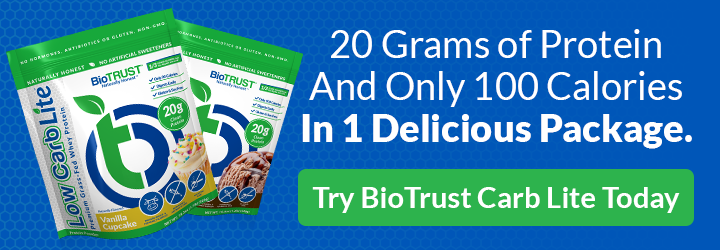These 5 Proteins Expand Your Waistline and Increase Belly Fat

When it comes to weight management and improving body composition, arguably the most effective dietary strategy is to optimize your protein intake. You see, there’s a pretty hefty body of research showing that high-protein diets:
- Accelerate fat loss and spare calorie-burning lean muscle when following a reduced-calorie diet1–3
- Prevent weight regain and promote long-term weight maintenance4,5
- Optimize muscle protein synthesis and help build and maintain calorie-burning lean muscle6,7
- Increase muscle size and strength and promote recovery when combined with regular resistance training
- Boost metabolic rate8,9
- Preserve metabolic rate after weight loss10,11
- Increase satiety, improve appetite control, and reduce cravings12–14
- Improve glycemic control15–18
Simply put, optimizing protein intake helps improve appetite control, enhance body composition, boost functional capacity, support healthy aging, and improve metabolic health. Speaking generally, a good starting point for most people is to aim for about 0.7 grams of protein per pound of body per day.19
But here’s the deal: Not all proteins are created equal. In fact, there are several very common choices that may actually have a counterproductive effect on body composition and overall health.
With that in mind, the goal is to help shine a light on some of those foods and ingredients that fall under the umbrella of proteins and may appear to be healthy—or are marketed as such—when in fact they may be derailing you from achieving your health and body composition goals.
Soy Protein
There may not be a more polarizing source of protein than soy. Depending on who you ask, soy protein either has a halo or horns and a pitchfork. There are a number of potential problems with soy protein consumption. For instance, soy contains substances called goitrogens, which can impair thyroid function, making weight management difficult as well as leading to a host of other issues.
In addition, soy contains phytoestrogens called isoflavones, which may negatively impact reproductive hormones in both men and women. What’s more, nearly all the soy (>90%) grown in the United States is genetically modified (i.e., GMO). While this is a complex and controversial topic, it’s worth pointing out. In addition, soy contains substances (called trypsin inhibitors) that can inhibit the activity of digestive enzymes responsible for breaking down protein, which can lead to GI distress.
Perhaps most importantly, numerous studies show that soy, a lower quality protein, is inferior to higher quality proteins (e.g., whey) when it comes to improving body composition and controlling appetite. For instance, research shows that supplementation with whey protein leads to greater increases in satiety hormones (e.g., GLP-1), greater reductions in hunger hormones (e.g., ghrelin), less body and belly fat, more calorie-burning lean muscle, and better recovery from exercise compared to soy protein.20–27
Fried Meats
You’d assume it goes without saying, but you know what happens when you start assuming things. Nonetheless, it bears repetition that commercially fried foods—including meat, poultry, and seafood—are not just bad for your waistline, they are “not safe for human consumption.”
Those aren’t my words. That’s the verdict of the FDA on the topic of industrial-produced trans fats. And, the fact is that partially hydrogenated oils, the major dietary source of trans fats, are the oil of choice when it comes to deep frying foods. There’s nothing healthy about these types of trans fats.
If that wasn’t enough, frying foods also results in the formation of advanced glycation end-products, or AGEs for short, also known as glycotoxins. In fact, the AGE content of a food can be up to 200 times greater after it’s fried. AGEs, which can also be formed inside the body (and it typically does so parallel to high blood sugar levels), increase free radical formation, impair antioxidant defense systems, increase oxidative stress, promote inflammation, and when combined with a typical Western-style diet (which tends to be higher in AGE-containing foods), AGEs may facilitate weight gain.28,29
Supercharge Your Diet Results with IC-5
IC-5, which is scientifically-designed to promote insulin sensitivity and improved carb tolerance, is one of our top diet-boosting supplement.
With IC-5, you know that you are supporting carbohydrate tolerance, keeping potentially harmful AGEs at bay, and amplifying the anti-aging effects of the ketogenic diet. It’s a triple threat for overall health and anti-aging!
Gluten-Containing Foods
Listen, I’ll be one of the first to tell you that gluten probably isn’t the devil many make it out to be. However, considering that going gluten-free typically means cutting out ultra-processed foods made with refined wheat (e.g., breads, breakfast cereals, pastas, bagels, baked goods, crackers, pancakes, waffles, cakes, cookies, breading/coating, croutons, tortillas, etc.), it sure can be a step in the right direction for many people.
Here’s what Lara Field, MS, RD, and pediatric nutrition advisor at the University of Chicago Celiac Disease Center, has to say on the topic: “There is evidence that when people make [gluten-free] diet changes, they may lose weight. It might not necessarily be because of the gluten, but rather the fact that they have eliminated processed foods from the diet and are eating more lean proteins and fruits and vegetables.”30
Yeah, what she said.
Now, before you chastise me and tell me you feel incredible on a gluten-free diet, I certainly acknowledge that a small percentage of the population struggles with non-celiac gluten sensitivity. However, I think it’s also important to recognize that there are components in wheat other than gluten, such as FODMAPs (fermentable, oligo-, di-, monosaccharides, and polyols) and amylase-trypsin inhibitors (ATIs) that may be to be blame for the issues (e.g., digestive discomfort) that some folks experience.31–35
Nonetheless, if gluten-free is a cue to move away from ultra-processed foods and gravitate toward minimally processed whole foods, then I’m okay with that!
Meat and Dairy from Feedlot Animals
On many an occasion, we’ve discussed the negative health consequences of excess consumption of pro-inflammatory omega-6 fatty acids, particularly when they’re out of balance with inherently anti-inflammatory omega-3 fats. While researchers attribute this in large part to the ubiquity of low-quality, refined vegetable/seed oils (such as safflower, sunflower, corn, cottonseed, and soybean oils, which are rich in omega-6 fats) present in the Western diet, consumption of foods from farm animals raised on oil seeds rich in omega-6 fats (e.g., corn, soy) plays an important role.36,37
Surely you’ve heard the saying “you are what you eat.” That also applies to the animal products we eat, and the nutrition profile of foods such as beef, chicken, dairy, and eggs can be influenced by the type of food the animal was raised on. Along those lines, compared to “conventional” (i.e., grain-fed) animals, systematic reviews show meat and dairy from organic (i.e., pasture-raised) animals are significantly higher in omega-3 fats and conjugated linoleic acid (CLA). This can help support a healthy metabolism and body composition. What’s more, they have a healthier omega-6 to omega-3 ratio.38,39
Egg Substitutes
Generally speaking, if you’re the type who chooses egg substitutes—or even egg whites for that matter—over whole eggs (including the yolk…especially the yolk), then you’re missing out. Maybe I can persuade you by giving you 6 darn-good reasons to eat the whole egg. Still need more evidence? Okay.






